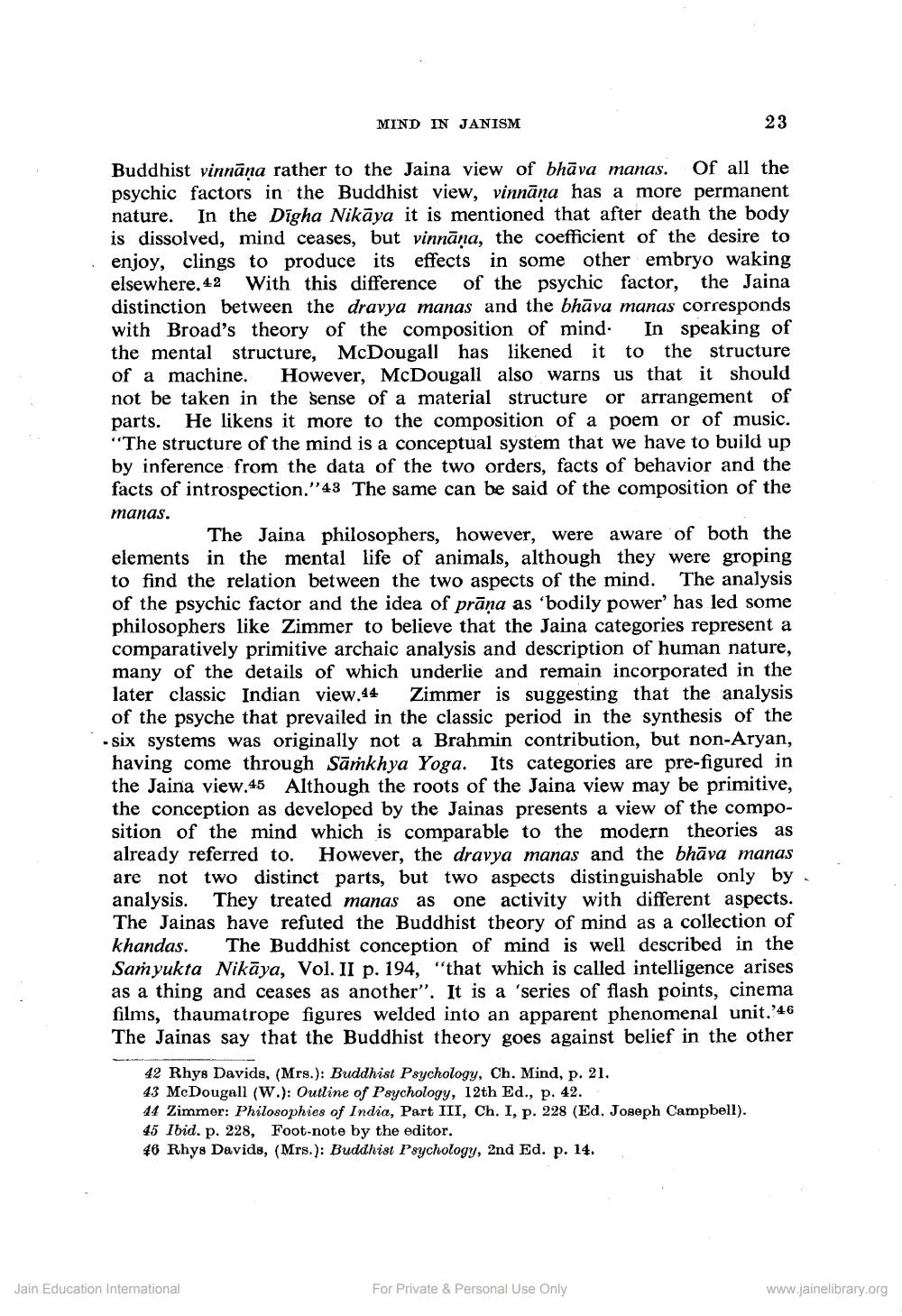________________
MIND IN JANISM
23
Buddhist vinnāņa rather to the Jaina view of bhāva manas. Of all the psychic factors in the Buddhist view, vinnāna has a more permanent nature. In the Digha Nikāya it is mentioned that after death the body is dissolved, mind ceases, but vinnāņa, the coefficient of the desire to enjoy, clings to produce its effects in some other embryo waking elsewhere.42 With this difference of the psychic factor, the Jaina distinction between the dravya manas and the bhāva manas corresponds with Broad's theory of the composition of mind. In speaking of the mental structure, McDougall has likened it to the structure of a machine. However, McDougall also warns us that it should not be taken in the sense of a material structure or arrangement of parts. He likens it more to the composition of a poem or of music. "The structure of the mind is a conceptual system that we have to build up by inference from the data of the two orders, facts of behavior and the facts of introspection."43 The same can be said of the composition of the manas.
The Jaina philosophers, however, were aware of both the elements in the mental life of animals, although they were groping to find the relation between the two aspects of the mind. The analysis of the psychic factor and the idea of prāņa as 'bodily power' has led some philosophers like Zimmer to believe that the Jaina categories represent a comparatively primitive archaic analysis and description of human nature, many of the details of which underlie and remain incorporated in the later classic Indian view.44 Zimmer is suggesting that the analysis of the psyche that prevailed in the classic period in the synthesis of the -six systems was originally not a Brahmin contribution, but non-Aryan, having come through Sāmkhya Yoga. Its categories are pre-figured in the Jaina view.45 Although the roots of the Jaina view may be primitive, the conception as developed by the Jainas presents a view of the composition of the mind which is comparable to the modern theories as already referred to. However, the dravya manas and the bhāva manas are not two distinct parts, but two aspects distinguishable only by - analysis. They treated manas as one activity with different aspects. The Jainas have refuted the Buddhist theory of mind as a collection of khandas. The Buddhist conception of mind is well described in the Samyukta Nikāya, Vol. II p. 194, "that which is called intelligence arises as a thing and ceases as another". It is a 'series of flash points, cinema films, thaumatrope figures welded into an apparent phenomenal unit.'46 The Jainas say that the Buddhist theory goes against belief in the other
42 Rhys Davids, (Mrs.): Buddhist Psychology, Ch. Mind, p. 21. 43 McDougall (W.): Outline of Psychology, 12th Ed., p. 42.. 14 Zimmer: Philosophies of India, Part III, Ch. I, p. 228 (Ed. Joseph Campbell). 45 Ibid. p. 228, Foot-note by the editor. 46 Rhys Davids, (Mrs.): Buddhist Psychology, 2nd Ed. p. 14.
Jain Education International
For Private & Personal Use Only
www.jainelibrary.org




